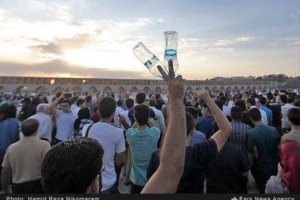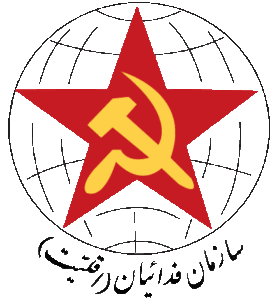Iranian Khuzestan; Protest over water shortage turned into anti-regime demonstration
 People in the southern city of Khorramshahr, Khuzestan Province, engaged in clashes with the police forces. Oil-rich Khuzestan suffers from high unemployment rate, ethical pressures against Iranian Arabs, poverty and environmental crises. However, this time the protest started over the shortage of drinking water and the salinity of the tap water. Although several large rivers are running in the province, the people don’t have access to clean water.
People in the southern city of Khorramshahr, Khuzestan Province, engaged in clashes with the police forces. Oil-rich Khuzestan suffers from high unemployment rate, ethical pressures against Iranian Arabs, poverty and environmental crises. However, this time the protest started over the shortage of drinking water and the salinity of the tap water. Although several large rivers are running in the province, the people don’t have access to clean water.
On 29 June, masses of the working people came out against this intolerable situation. The regime, instead of listening to the people’s demand, sent the police to suppress them. The people confronted the police by changing slogans “death to dictator”, “death to Khamenei” and “death to Rouhani”. The police shot at the protesting people and wounded 11. Again, the regime’s officials described the protesting people as “saboteurs and rioters”. The police arrested ten and announced it has planned to arrest 35 more.
The people in other cities and towns, such as Abadan, Sar Bandar, Kut Abdollah, Khur Musa, Ahvaz and Mahshahr, showed solidarity with Khorramshahr.
The protest in Khorramshahr once more showed that the people’s campaigns across the country has a similar content, and it is to change the situation radically through overthrowing the Islamic regime. As was seen, protests over drinking water shortage quickly turned into a political protest. Similar protests broke out in Bushehr and Borazjan in southern Iran.
But what should be learnt from Khorramshahr? The people must know that a real unity and solidarity, and not just expressing solidarity, is needed. If masses in other cities poured into streets and supported Khuzestan’s people the regime would not have been able to send hordes of anti-riot mercenaries to suppress the protest. This is a weak point of the movement that is exploited by the regime. The regime mobilises its forces all over the country and send them to isolated and separate campaign. Iranian people across the country must recognise any campaigns as part of their struggle against a common enemy.
The other shortcoming with this stage of the struggle is the absence of organised involvement of Iranian proletariat. In almost all current protests, workers and their families are the main force but the fact is that they take part as an amorphous mass. Only when workers across the country organise a political mass strike the regime will lose its power and the path will be paved for the consolidation of protests in all owns and cities, and these various forms of struggle will finally lead to an armed insurrection and the fall of the Islamic Republic.
(Kaar-No.780; July 2018)


